Space Cats
A taxonomy.
Ever since the start of the year, I’ve been adding one tweet per week to a thread covering cats in sci-fi cover art.
It’s been a great way to dig deep into the very specific sub-subgenre, which is one of my favorites. Now that we’re exactly halfway through the year, I have an ask: Can you make a little noise about the thread? Retweet it, send it to your cat-obsessed friend.
Most of the art I post is a little too niche to go viral, but I think most people would like this thread! Plus it’s never too early to start a little stealth promo for my art book.
And if any of you have a Metafilter account, I’d love a post about it! The site featured my tumblr back in 2014 and I’ve been chasing that high ever since.
So what did I learn about Space Cats in the process of making this thread? I propose that Space Cats can be roughly divided into three different categories.
First, there’s the ship’s cat.
Just as we termed the “spaceship” after the nautical ship, we’ve transferred a lot of nautrical concepts into outer space, like the idea of a captain running things or words like stern and prow. The ship’s cat has been a thing for thousands of years, so cats also tend to crop up as spaceship pets, too. The most famous example is probably Alien’s Jonesy, but in retro sci-fi literature, my top pick is from Andre Norton’s 1968 novel The Zero Stone, where a ship’s cat eats a seed that mutates it into a host for an ancient telepathic alien named Eet.
Technically, Eet is far from a cat, but don’t tell the cover artists. Here’s Jeffrey Catherine Jones’ dynamic-yet-minimalist 1969 cover, a top-tier entry in Space Cat canon.
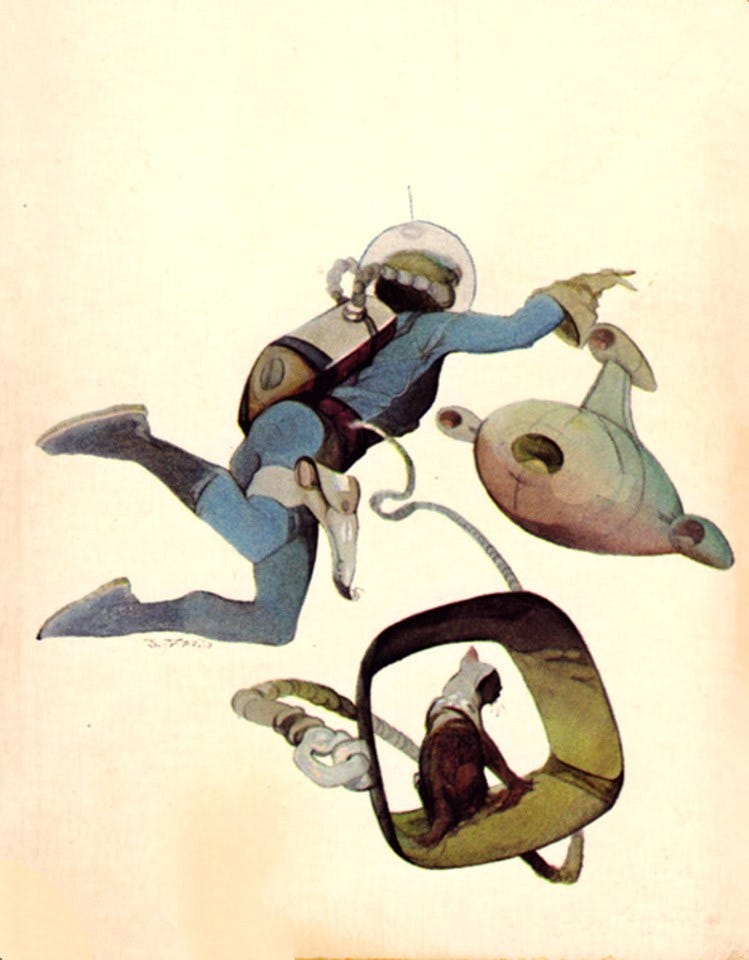
Bob Eggleton’s 2008 cover for the same series isn’t bad either. To my knowledge, these are the only two sci-fi covers to feature a kitty carrier.
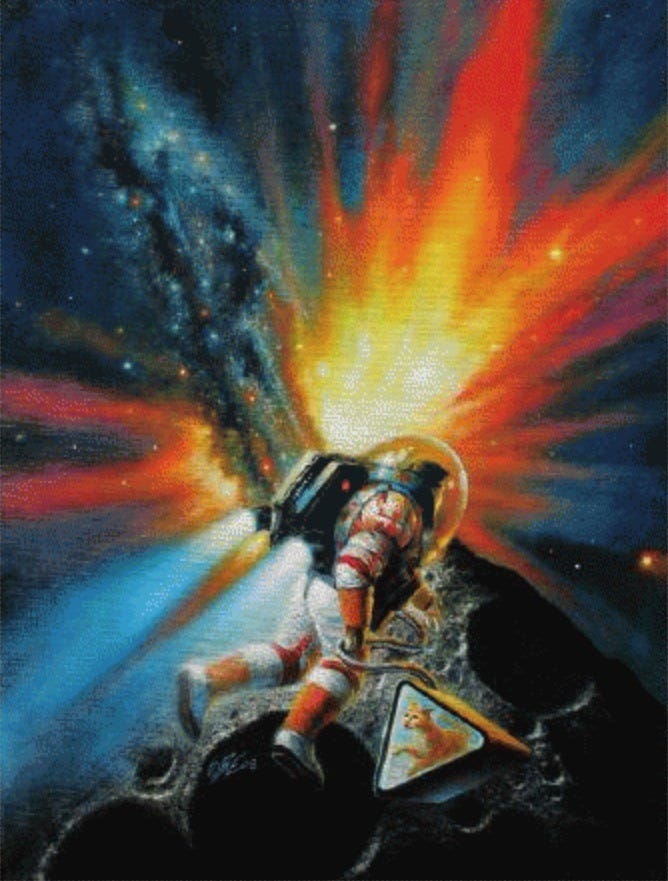
Multiple ship’s cats made David Willson’s 1986 cover art to Tuf Voyaging, by George R. R. Martin.
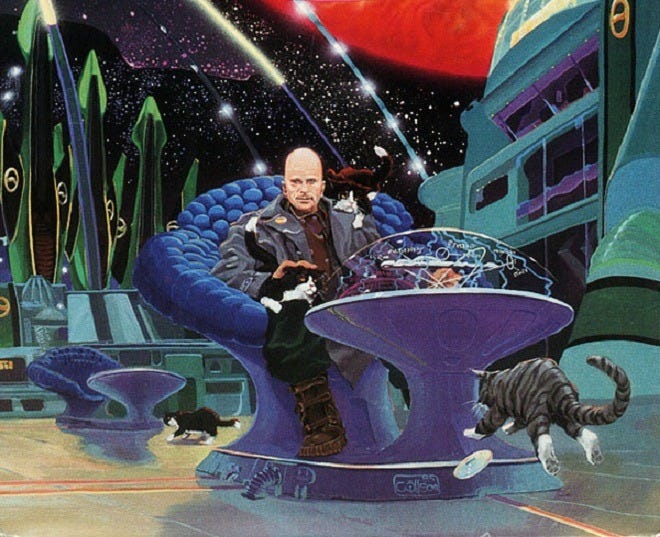
Danny Flynn’s 1986 cover to The Cat Who Walks Through Walls, by Robert A. Heinlein is another example: It’s a space habitat, not a spaceship, but same difference.
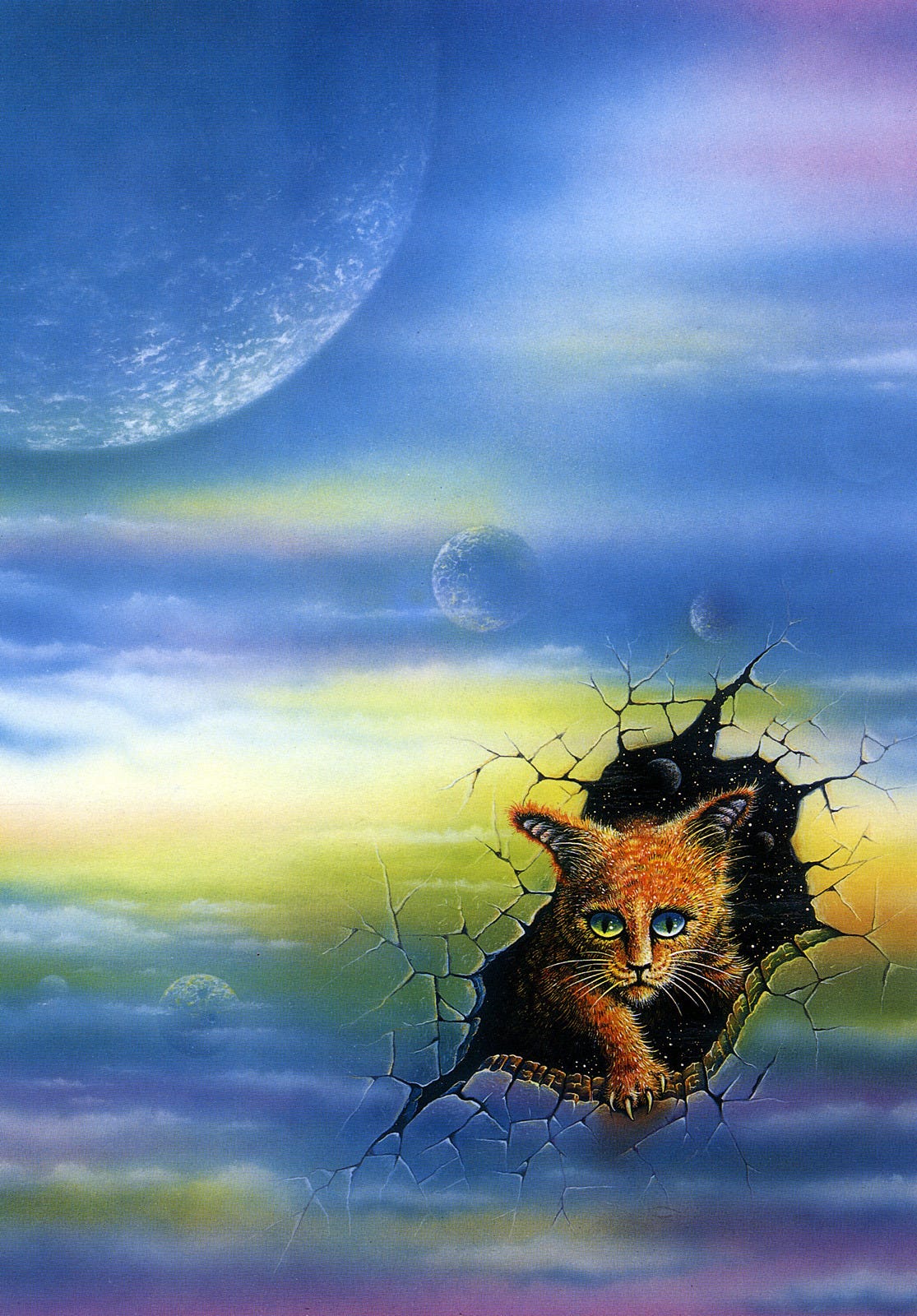
Ultimately, the ship’s cat category is pretty small next to the second category: Sentient, humanoid, bipedal aliens that are cat-like in appearance.
This one’s popular: Everyone likes cats, and every sci-fi alien race needs something to set it apart from humanity, so why not give them cat ears and a haughty attitude? Long-running franchises like Star Wars, Doctor Who, and Perry Rhodan each have more than one example of cat-like aliens.
Bruce Pennington did a lot of these. Here’s his 1971 cover to Anne McCaffrey’s Decision at Doona.
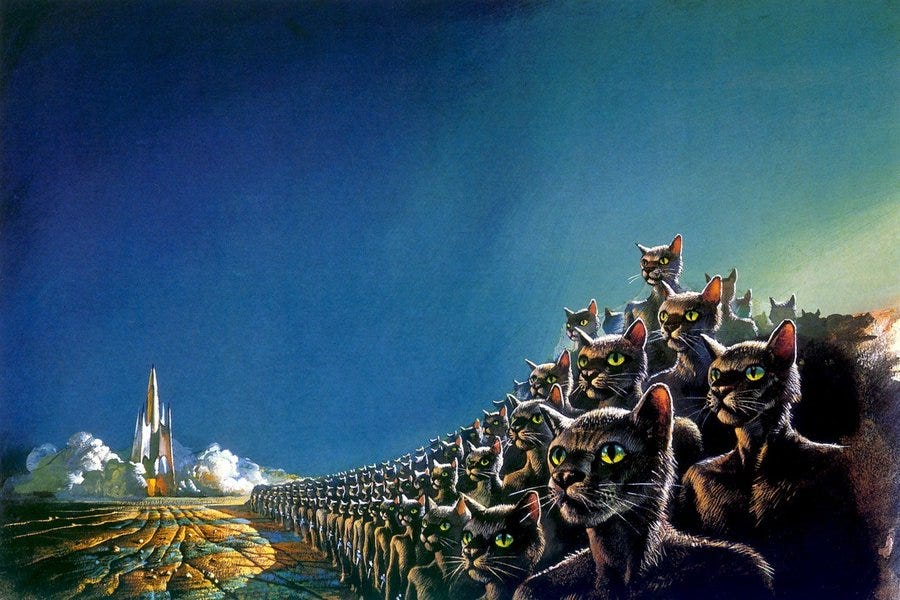
I’m a big fan of cat aliens with a fashion sense, and Wayne Barlowe delivered with this 1981 cover art to Andre Norton’s Breed to Come. I love how the cat’s staring enigmatically at the viewer, too, some real Mona Lisa vibes.
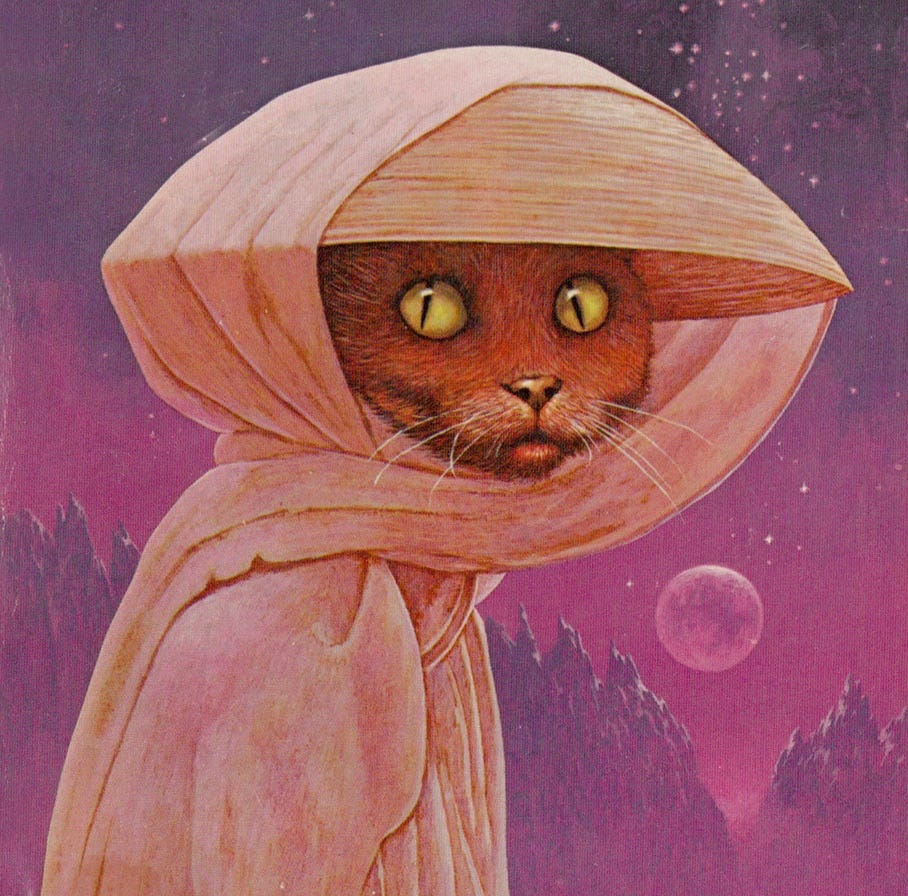
Finally, there’s the third category: Cat-like aliens that are the indigenous wildlife of a planet. They’re often big and scary, modelled after panthers or tigers. A classic example here from Frank Frazetta, illustrating Edgar Rice Burroughs’ Lost on Venus space opera:
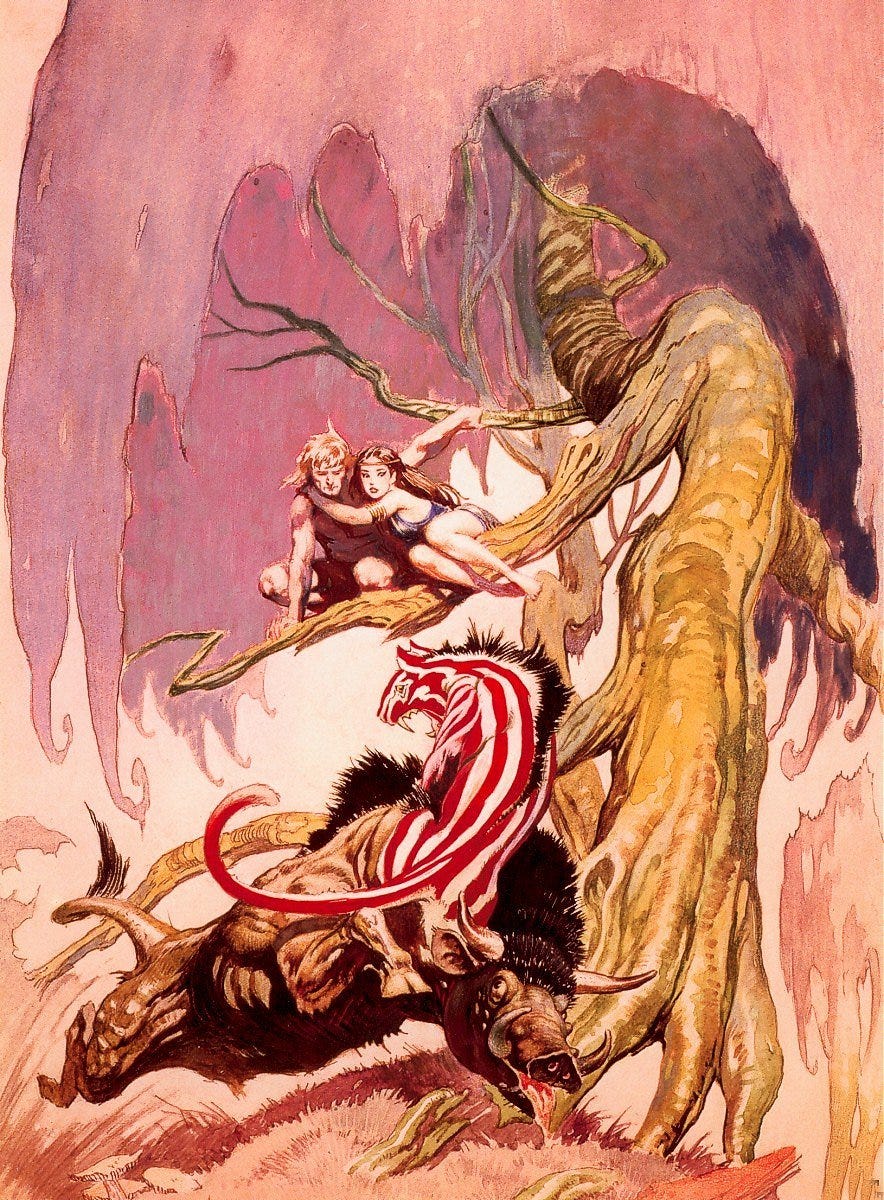
They can be domesticated, too, like on this 1979 Mike Hinge cover for Masters of Everon by Gordon R. Dickson.
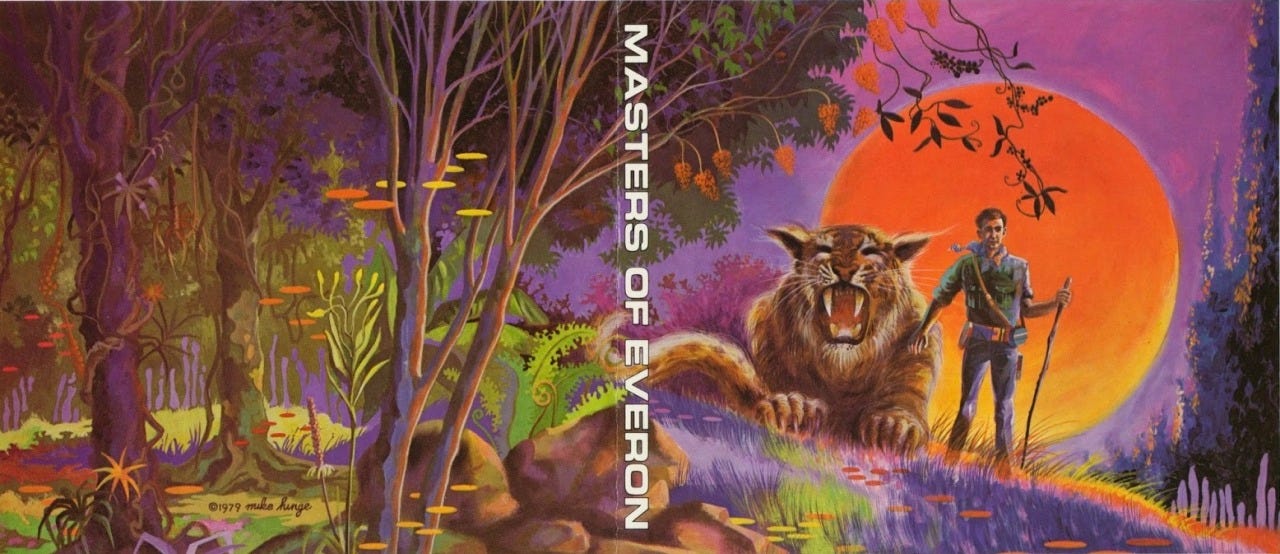
You can even ride them, judging from this 1967 Frank Kelly Freas cover to Emil Petaja’s Lord of the Green Planet.
Fun fact: For this cover, Freas actually used a reference image of his own daughter riding the family cat, a 28-pound Siamese.
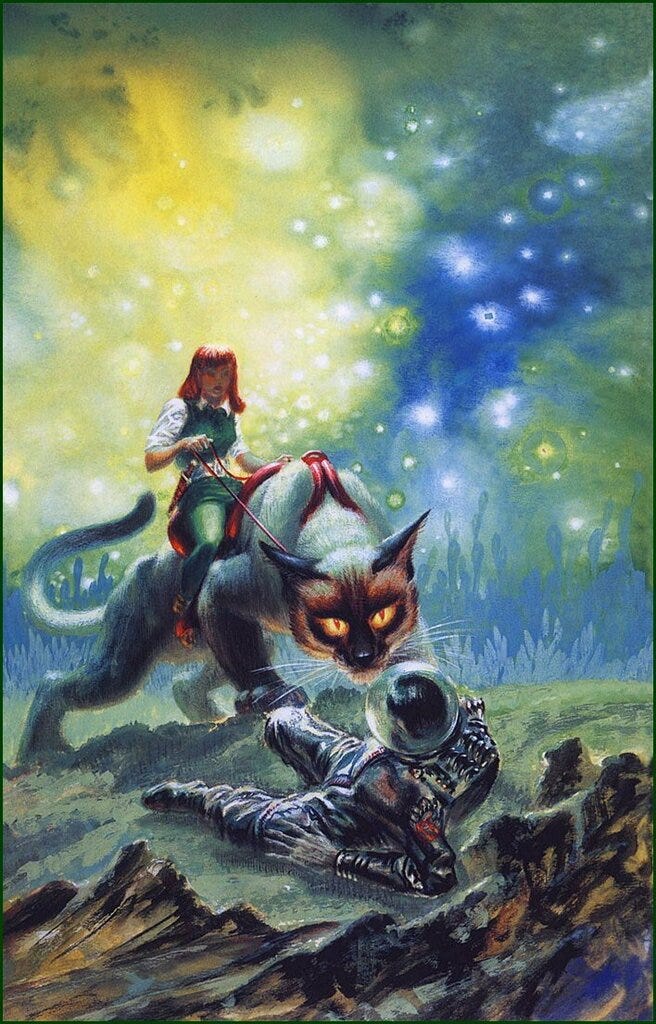
The wildlife category of Space Cat can include some wild examples. Here’s Vicente Segrelles’ 1990 cover to the Italian magazine Urania’s translation of A E Van Vogt’s Monsters anthology. I’m not quite sure what I’m looking at, but I think it’s the very territorial ghost of a space cheetah.
If any of my subscribers have read this anthology and know which story the cover references, feel free to get in touch!
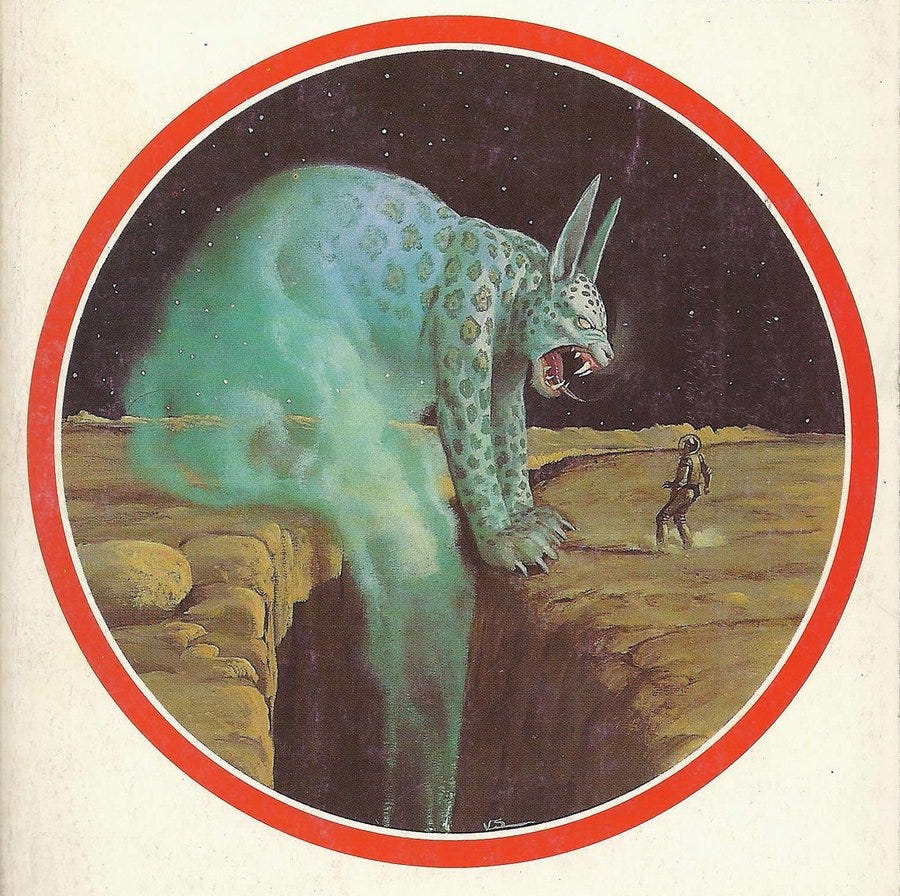
There are a few exceptions to these three general categories: Some artists just tossed cats into a collage or a surreal cover.
Feel free to comb through my space cat tag on tumblr for a look at all of them, including a lot of the entries I’ll be adding to my big thread across the rest of the year.
So, is there any big reason why so many sci-fi artists and authors settled on cats?
I don’t have hard evidence for this theory (aside from the Freas household), but I suspect the answer is simple: Sci-fi artists love cats just as much as everyone else, and don’t need much of an excuse to showcase a few of them floating through space in their kitty carriers.